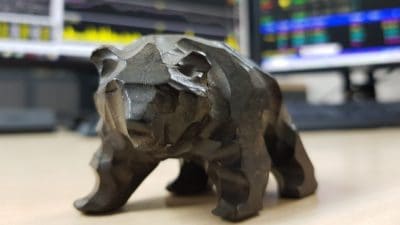Diversified resources company Vedanta (LSE: VED) has released results for the first half of the year which show that it remains loss-making. Its loss attributable to equity holders was $64m during the period. While this shows that Vedanta has encountered yet further difficulties, does it have long term potential? Or should investors in the company sell up and buy shares in a sector peer?
At first glance, Vedanta’s half year was disappointing. As mentioned, it remained loss-making, but this figure masks the progress being made by the business. Vedanta was able to reduce costs during the period so that its profit margins at the EBITDA (earnings before interest, tax, depreciation and amortisation level) were their highest for two years.
Strong free cash flow
This helped to narrow the net loss from the same period of the prior year. In the first half of 2015, Vedanta’s net loss was $325m versus $64m in the first half of 2016. Vedanta increased production at its aluminium, power and iron ore assets. It was also able to record strong free cash flow as well as continue with the process of de-leveraging its balance sheet.
However, Vedanta was hurt by lower commodity prices. Clearly, there is the potential for further falls over the short to medium term, but Vedanta’s diverse business model should help it to overcome them in the long run. Furthermore, Vedanta is expected to record a strong second half performance so that its bottom line is in the black for the full year. This should help to improve investor sentiment and push its share price higher.
Looking ahead to next year, Vedanta’s earnings per share are expected to rise from 9p to 41p. This puts it on a price-to-earnings growth (PEG) ratio of 0.1, which indicates that it offers a wide margin of safety. Therefore, while the outlook for commodity prices may be uncertain, Vedanta’s valuation shows that it has appeal for the long term even in a challenging operating environment.
Lower risk
Of course, Vedanta is not the only resources stock which could be worth buying. Anglo American (LSE: AAL) has a bright future thanks in part to the restructuring which it is in the process of conducting. It will mean a slimmer and more efficient business which is more focused on operations that offer long term value creation for its investors. Although this has meant one-off costs in the short run, it should lead to improved financial performance in future years.
Anglo American also trades on a PEG ratio of only 0.1. However, its risk profile may be lower than that of Vedanta as a result of its asset disposals. They should improve Anglo American’s cash flow and balance sheet at a time when Vedanta is increasing risk by merging with Cairn India. Therefore, Anglo American may have similar potential rewards on offer to those of Vedanta, but with a lower risk profile. It could therefore prove to be a better buy than Vedanta.







